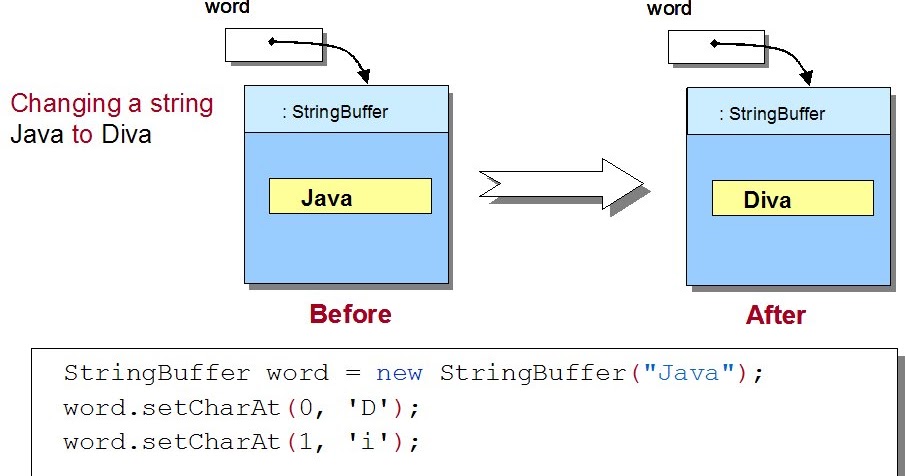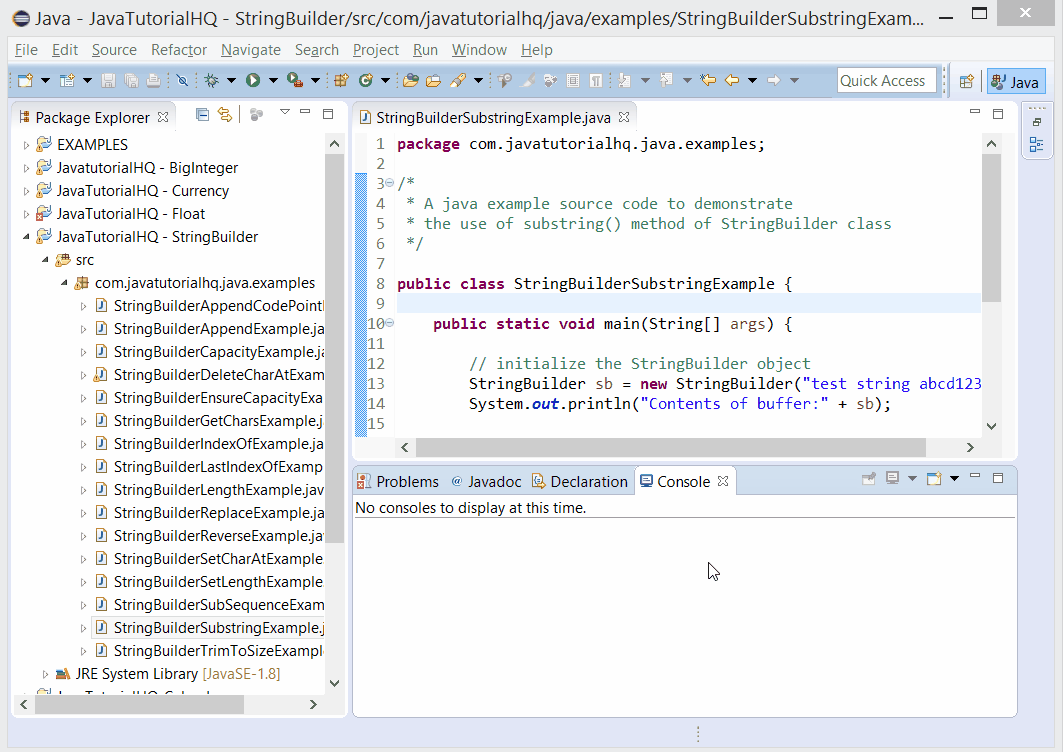
When the start is equal to the end, no changes are made, and a StringIndexOutOfBoundsException is thrown when the start is negative, greater than the length of the string, or greater than the end of the string. The start index is inclusive, while the last index is exclusive as it deducts 1 from the second parameter. To remove a substring from a string in Java, you can use the built-in replace or replaceAll methods provided by the String class. The delete() method accepts two int parameters indicating the start and the end of the substring to be removed from the string. The empty constructor of StringBuilder creates a string builder with an initial capacity of 16 characters, and if the internal buffer overflows, it is automatically made larger. The StringBuilder contains a mutable sequence of characters used to modify a string by adding and removing characters. Using StringBuilder’s delete() method to remove substring from String in Java Peter is years old, and Jane is years old I hope you enjoyed this article and best of luck on your Python journey.Public class RemoveSubStringFromStringMain Here is the basic syntax for Python's translate() method.

The return value for the replace() method will be a copy of the original string with the old substring replaced with the new substring. In Python you can use the replace() and translate() methods to specify which characters you want to remove from the string and return a new modified string result. ord('i')įor our table, we need to assign the value of None so the computer will know to replace the letter i with nothing. The ord() function will return a numerical value.
#String remove substring java code
We first need to use Python's built in ord() function to get the Unicode code point value for the letter i.

In this example, we want to remove all instances of the letter i from the string Jessica Wilkins. Let's take a look at some examples to better understand the translate() method. str.translate(table) Python translate() example This method returns a new string where each character from the old string is mapped to a character from the translation table and translated into a new string.
#String remove substring java how to
If we were to print out the result, this is what it would look like: print(developer.replace('s', '', 2)) How to use Python's translate() methodĪnother way to remove characters from a string is to use the translate() method. This line of code says to remove the letter s only twice from the string Jessica Wilkins. In this next example, we want to use the optional_max parameter to set the number of times we want to remove the letter s from my name. The replace() method will return a new string. It is important to remember that the original string remains unchanged because strings are immutable. If we print out the result then this is what we would get: print(developer.replace('Wilkins', '')) This tells the computer to take the old substring of Wilkins and replace it with an empty string.

If we wanted to remove my last name, we can use the replace() method like this: developer.replace('Wilkins', '') In this first example, we have a string called developer with my name assigned to it. The optional_max parameter represents the maximum count of times to replace the old substring with the new substring. The new_str parameter represents the new substring you want to use. The old_str parameter represents the substring you want to replace.

Here is the basic syntax for the replace() method. In this article, I will show you how to work with the replace() and translate() methods through the use of code examples. It is important to remember that the original string will not be altered because strings are immutable. In Python you can use the replace() and translate() methods to specify which characters you want to remove from a string and return a new modified string result.


 0 kommentar(er)
0 kommentar(er)
